The BEST episodes written by David Attenborough

#1 - Surviving
The Private Life of Plants - Season 1 - Episode 6
David Attenborough reaches the climax of his journey into the world of plants. The final programme looks at the amazing variety of ingenious techniques plants have invented to survive even the coldest Arctic wastes and the driest, hottest deserts. Time-lapse sequences reveal giant water lilies rampaging across the Amazon, mangroves that care for their babies, and plants that survive only by devouring animals.

#2 - Living Together
The Private Life of Plants - Season 1 - Episode 5
David Attenborough looks at the battle for survival in the plant world. Plants often rely on animals, fungi and each other for food, protection or a home - and they are not always grateful partners. Remarkable time-lapse photography reveals them strangling, stabbing and sucking their victims dry.
Watch Now:Amazon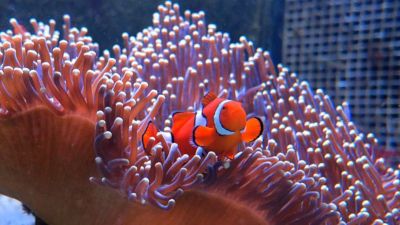
#3 - Survival
Great Barrier Reef with David Attenborough - Season 1 - Episode 3
When David Attenborough first visited the Great Barrier Reef in 1957, he considered it the most spectacular place in the natural world and he assumed that it would last forever. Since then the coral has been dying at an unprecedented rate. In this episode he undertakes his most important mission to understand what the next few decades hold for this remarkable community of animals, as well as what is being done to save it. On his journey, David uncovers the remarkable ways in which scientists are trying to preserve the reef and embarks on an ambitious exploration of his own, the deepest dive ever on the reef. But despite the discoveries now being made by scientists and in the reef's furthest reaches, David fears for the future of this incredibly complex and beautiful ecosystem so vital for the world's oceans.
Watch Now:Amazon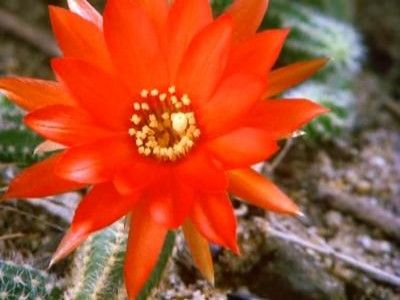
#4 - Travelling
The Private Life of Plants - Season 1 - Episode 1
David Attenborough's incredible journey into the world of plants. By using advanced timelapse photography, the plants are shown as complex and highly active organisms - growing, fighting, competing, breeding and struggling to survive. This programme demonstrates the techniques plants employ to travel from place to place to find new homes.
Watch Now:Amazon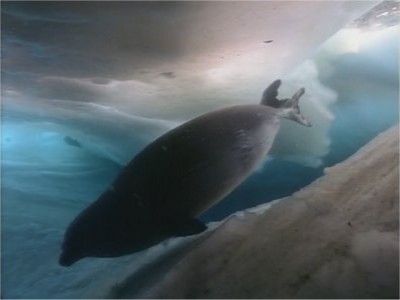
#5 - The Big Freeze
Life in the Freezer - Season 1 - Episode 5
This episode shows the lives of animals in Antarctica when the ice has frozen over at the end of summer. During the Antarctic winter, conditions are so extreme that most animal life deserts the region. The few exceptions include emperor penguins, which huddle together as storms rage, and Weddell seals, which maintain holes in the ice for access to an underwater world in which fish survive by having natural antifreeze in their blood.
Watch Now:Amazon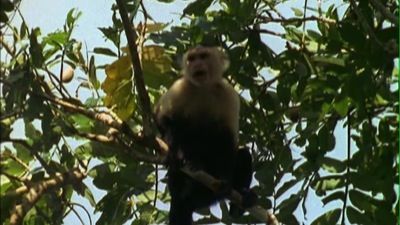
#6 - Chisellers
The Life of Mammals - Season 1 - Episode 4
Special tools like chisel sharp front teeth and underground dwelling enable this group of mammals to feast on roots and seeds.
Watch Now:Amazon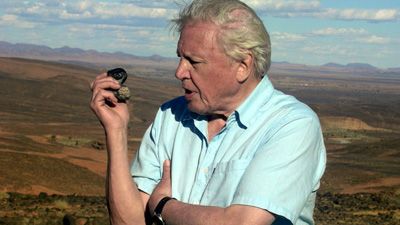
#7 - Arrival
David Attenborough's First Life - Season 1 - Episode 1
David starts his journey in a forest near the home he grew up in Leicester, where a fossil discovery transformed our understanding of the evolution of complex life. He then travels to Newfoundland and the Australian outback, where he unearths the earliest forms of animal life to exist on the planet.
Watch Now:Amazon
#8 - One Ocean
Blue Planet II - Season 1 - Episode 1
Footage of marine life in different environments around the north, beginning with a tropical coral reef which has medicinal properties for dolphins, and is used as a tool by tusk fish. In Japan, a shipwreck is home to the Asian sheepshead wrasse, which can change gender, while in the polar north, walruses struggle to find ice floes for their pups to rest on as climate change takes its toll on the environment.
Watch Now:Amazon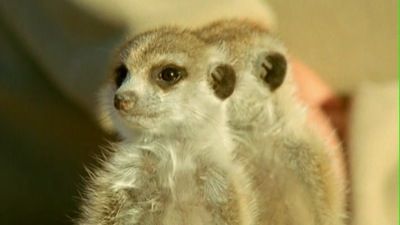
#9 - Life in the Trees
The Life of Mammals - Season 1 - Episode 8
A range of adaptations from sucker-feet to gripping tails help the tree dwellers to survive, and in the dark forest super senses come in to play.
Watch Now:Amazon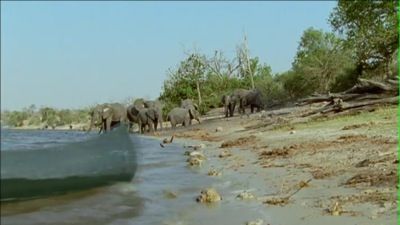
#10 - Insect Hunters
The Life of Mammals - Season 1 - Episode 2
Mammals from tiny shrews to giant anteaters have specialised in eating insects. Some have even pursued their prey into the skies.
Watch Now:Amazon
#11 - Coral Reefs
Blue Planet II - Season 1 - Episode 3
Coral reefs are home to a quarter of all marine species. Survival in these undersea mega-cities is a challenge with many different solutions. A turtle heads to the reef's equivalent of a health spa - but she must use trickery to avoid the queue. A remarkable Grouper uses the fish equivalent of sign language to collaborate with an octopus, flushing their prey out of hiding holes. A metre-long, ferocious-jawed Bobbit Worm hides in its tunnel. Monocle Bream retaliate by squirting water to expose its sandy lair.

#12 - Growing
The Private Life of Plants - Season 1 - Episode 2
David Attenborough presents time-lapse photography that reveals how new leaves fight for a place in the sun, and examines the ingenious methods that plants use to defend themselves from animal attack.
Watch Now:Amazon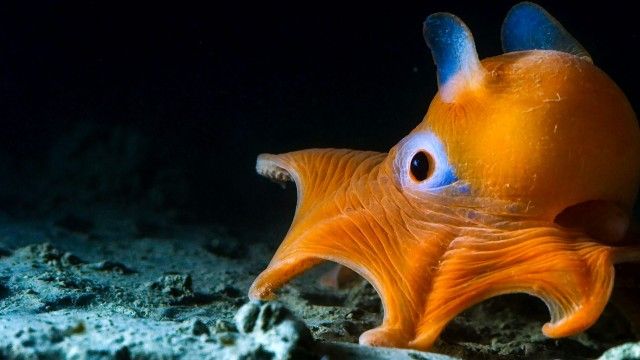
#13 - The Deep
Blue Planet II - Season 1 - Episode 2
The deep is perhaps the most hostile environment on earth, at least to us - a world of crushing pressure, brutal cold and utter darkness. We have barely begun to explore it, and yet it is the largest living space on the planet. Scientists already think that there is more life in the deep than anywhere else on earth. This episode takes us on an epic journey into the unknown, a realm that feels almost like science fiction. We discover alien worlds, bizarre creatures and extraordinary new behaviours never seen before. We encounter savage hordes of Humboldt squid hunting lanternfish in the depths and coral gardens flourishing in absolute darkness, with more species of coral to be found in the deep than on shallow tropical reefs.
Watch Now:Amazon
#14 - Big Blue
Blue Planet II - Season 1 - Episode 4
The big blue is the world's greatest wilderness, far from shore and many kilometres deep. It's a vast marine desert where there is little to eat and nowhere to hide. Yet it's home to some of the biggest and most spectacular creatures on earth. This episode reveals what it takes to survive in this savage and forbidding world. We witness feats of incredible endurance, moments of high drama and extraordinary acts of heart-wrenching self-sacrifice. Every animal in the big blue must find their own unique way to survive.
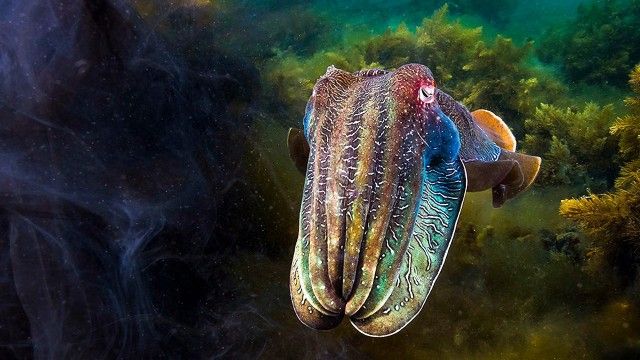
#15 - Green Seas
Blue Planet II - Season 1 - Episode 5
Footage of wildlife inhabiting underwater kelp forests, including thousands of giant cuttlefish spawning along a restricted area of rocky reef off the south coast of Australia. Males outnumber females 11 to one, which leads to fierce competition. Larger males use brute force to drive off competition, while their smaller rivals use deception by mimicking the appearance of females. The programme also features tiger sharks hunting for green turtles in fields of seagrass and spider crabs trying to avoid predators while they shed their shells.
Watch Now:Amazon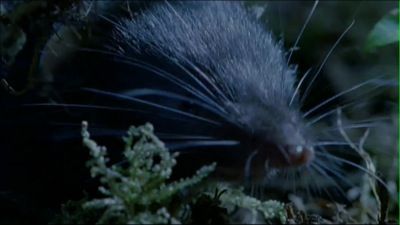
#16 - Plant Predators
The Life of Mammals - Season 1 - Episode 3
The plant eaters take on the largely indigestible, spiny and poisonous defences of plants with some spectacular physical adaptations to diet.
Watch Now:Amazon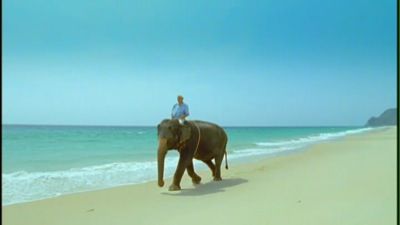
#17 - Return to the Water
The Life of Mammals - Season 1 - Episode 7
With perfect streamlined bodies and great underwater speed, seals, dolphins, porpoises and whales became the new hunters of the sea..
Watch Now:Amazon
#18 - Our Blue Planet
Blue Planet II - Season 1 - Episode 7
The final episode of Blue Planet II explores parts of the ocean that nobody has ever visited, encountered extraordinary animals, and discovered new insights into life beneath the waves. In Our Blue Planet, Sir David Attenborough examines the impact of human life on life in the ocean. In this final episode, we uncover the impact that our modern lives are having on our best-loved characters from across the series, including devoted albatross parents unwittingly feeding their chicks discarded plastic and mother dolphins potentially exposing their newborn calves to pollutants through their contaminated milk. Scientists have even discovered that increasing noise levels may stop baby clownfish finding their way home.
Watch Now:Amazon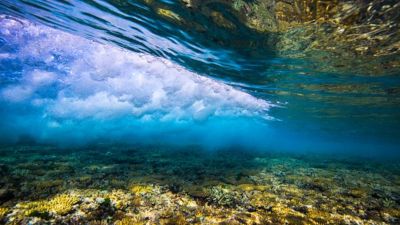
#19 - Builders
Great Barrier Reef with David Attenborough - Season 1 - Episode 1
In this first episode, David descends beneath the waves at night in the state-of-the-art Triton submersible, the first of its kind to visit the reef. He meets some of the tiny coral animals that built the reef and helped to turn it into an underwater wonderland. He then takes to the skies to witness the vast scale of their endeavour, a living structure that provides a home for thousands of species. Using cutting-edge technology to generate computer scans of the sea floor, David learns that the Great Barrier Reef we know today is much younger than scientists ever imagined. He meets some of the people that have lived alongside it and who have told stories of its origins for thousands of years. At the beautiful Lizard Island research station, David explores newly discovered research which uncovers a complex community of animals who form remarkable relationships among the coral. But none of this great diversity would be here if it were not for one extraordinary event that happens every year, providing a spectacular finale: the annual coral spawning.
Watch Now:Amazon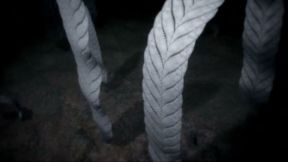
#20 - Conquest
David Attenborough's First Life - Season 1 - Episode 2
Attenborough explores the Burgess Shale in Canada’s Rocky Mountains, where there is fossil evidence of an event 542 million years ago which saw animals increase in number, diversity and size as never before. These ancient rocks reveal the world’s first large predator, the first defences and the emergence of an animal group that would conquer the oceans: the hard-shelled arthropods.
Watch Now:Amazon
#21 - Visitors
Great Barrier Reef with David Attenborough - Season 1 - Episode 2
In this second episode, David Attenborough continues his exploration of the Great Barrier Reef, aboard the research vessel Alucia. He discovers the creatures that visit the reef every year, from birds to whales, some travelling thousands of kilometres to get there. Using the latest technology, David dives into the shark-infested waters of Osprey Reef in the Triton submersible. Sixty years after his first visit to Raine Island, he returns to the nesting grounds of the green sea turtle and at Lady Elliot Island marvels at manta ray cleaning stations. New tracking technology allows David to follow the story of visitors like the dwarf minke whales. Stunning satellite imagery and computer animation reveal their journey and David discovers their surprising reasons for returning and why the reef is vital for their survival.
Watch Now:Amazon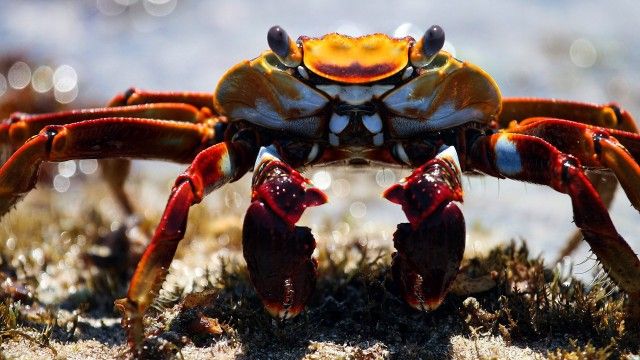
#22 - Coasts
Blue Planet II - Season 1 - Episode 6
At the coast, two worlds collide. Coasts is the story of how our Blue Planet’s wildlife survives in this ever changing world. It’s a roller-coaster ride of heart stopping action and epic drama, with characters from beautiful to bizarre. This episode is a rollercoaster ride of heart-stopping action and epic drama, peopled with characters from the beautiful to the bizarre. We meet fish that live on dry land and puffins that must travel 60 miles or more for a single meal, and witness a life-and-death struggle in a technicolour rock pool.
Watch Now:Amazon
#23 - Arriving
Trials of Life - Season 1 - Episode 1
The first episode examines the various methods by which creatures come into the world. Attenborough’s opening statement alludes to the annual spawning of the Christmas Island red crab, of which there are estimated to be some 120 million. The exercise is all the more hazardous since the species is a land crab, and the eggs have to be deposited in the sea - where the most ancient animals on the planet still live and breed. One of the most prolific aquatic egg producers is the giant clam, but some land animals also lay vast quantities, and the mantis is one example. In the Western United States, Attenborough observes a wasp that digs a burrow, conceals it, and stocks it with fresh caterpillars for her emerging young. The grubs of another start life inside caterpillars, and eat the unsuspecting hosts. The problems of larger animals are illustrated by snow geese in the Arctic, which have to defend their eggs from arctic foxes. The process of embryonic growth inside the egg, from laying to hatching, is shown in detail. The malleefowl warms its eggs with rotting leaves, and Attenborough demonstrates the care with which it regulates them by adding sand to its mound - to have it kicked back in his face. The sea louse is a crustacean that commits suicide: its grubs consume so much of the mother’s energies that she dies after birth. Mammals shown giving birth to fully formed young include wildebeest, antelope, sea lions and chinchillas.
Watch Now:Amazon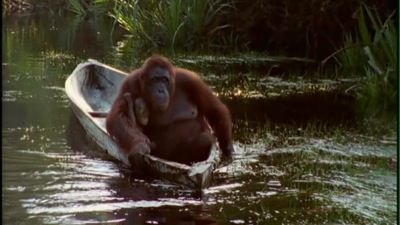
#24 - Food for Thought
The Life of Mammals - Season 1 - Episode 10
The natural world was transformed when one great ape began to walk upright - us. But why has this led to the development of our extraordinary brains?
Watch Now:Amazon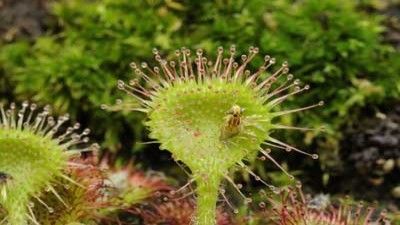
#25 - Solving the Secrets
Kingdom of Plants 3D - Season 1 - Episode 2
David uses the latest 3D technology to explore a world beyond the confines of our human senses. He begins with the secret world of plant movement and uses sinister carnivorous plants to show just how active plants can be. Bladderwort utricularia is a pond-dweller that is among the fastest known, its traps snapping shut in less than a millisecond. As the seasons change, David demonstrates how plants operate on a different time scale to us; how they modify their lives according to the time of year. We discover insects’ hidden links with plants, both as pests and pollinators. UV-sensitive 3D cameras reveal the invisible alter-ego of plants and their flowers’ mesmerizing patterns; a parallel-dimension of strange colours and stunning patterns through which plants communicate with them. With the aid of visual effects, David steps among the swirling vortices of plant scent; communication signals with which plants are inextricably plugged in to the natural world. And using a tuning fork, he demonstrates how plants and insects can even communicate with music. As autumn envelopes the Gardens, fungi reveal themselves not as the enemies of plants but their vital allies. In Kew’s atmospheric Fungarium, David discovers a specimen that has the power of mind control and another that lives underground where it has grown to be so big it can be counted as the largest single organism on the planet. It is 6 times bigger than Kew Gardens itself. David concludes the film in the Princess of Wales Conservatory, where he meets an old friend, the great Titan arum. At 8ft tall, it is the largest flower in the world and a plant he remembers from a previous filming trip to Sumatra. Using heat sensitive cameras, David reveals the Titan arum’s secrets, how it uses a combination of heat and powerful scent to punch a hole in the stratified layers of air in the rainforest, enabling it to broadcast its presence across vast distances.
Watch Now:Amazon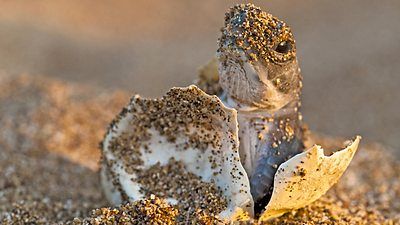
#26 - Cape
Africa (2013) - Season 1 - Episode 4
Southern Africa is a riot of life and color because of two great ocean currents that sweep around the continent's Cape. To the east, the warm Agulhas current generates clouds that roll inland to the wettest place in southern Africa. To the west is the cold Benguela current, home to more great white sharks than anywhere else. Moisture laden fog rolls inland, supporting an incredible desert garden. Where the two currents meet, the clash of warm and cold water creates one of the world's most fabulous natural spectacles - South Africa's sardine run. This is the greatest gathering of predators on the planet, including Africa's largest, the Brydes whale.
Watch Now:Amazon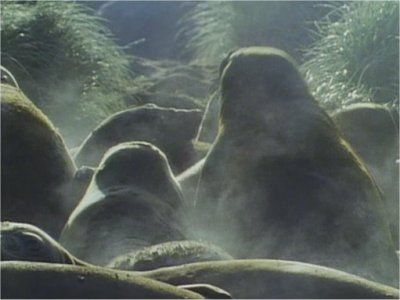
#27 - The Door Closes
Life in the Freezer - Season 1 - Episode 4
This episode shows the northward migration of animals on Antartica and the islands surrounding it. Autumn has stirred up harsh seas which batter the islands of Antarctica, leaving penguins to struggle ashore to feed their young. Amid the wildness of the landscape, leopard seals pounce at unsuspecting fledglings, fur seal pups take their first swim, and young wandering albatrosses rehearse their amazing courtship dance.
Watch Now:Amazon
#28 - Finding Food
Trials of Life - Season 1 - Episode 3
The next installment is devoted to the ways in which animals gather their sustenance. Attenborough begins in the South American rainforest, where the proliferation of animal and plant life does not necessarily make it easy to find food. Some leaves are poisonous, and so those that eat them have to be careful. Other plants use food (or nectar) as a bribe to get their pollen transported, and several species of hummingbird have developed exclusive relationships with certain of them. Fruit is also on offer, again as a means of reproduction, and creatures such as squirrel monkeys eat little else. Meanwhile, parrots and macaws take kaolin as an antidote to their diet of toxic seeds. Attenborough witnesses a 60,000 strong flock of knot and dunlin suddenly take advantage of a low tide to feed on tiny mud-dwelling molluscs. Barracuda hunt small fish, and drive shoals of them into bays to be eaten by pelicans, which are besieged by gulls that attempt to steal their catches. One species of gecko is able to differentiate between worker termites and the more dangerous soldiers. The web of the orb spider is hailed as one of the most elegant food catching devices, and the methods of two others, nephila and its kleptoparasite visitor, argyrodes, are explored in detail. Finally, tropicbirds, their crops full with food en route back to their nests, are ambushed in mid-air by a group of frigatebirds, whose aim is to make them surrender their cargo.
Watch Now:Amazon
#29 - Footsteps in the Snow
Life in the Freezer - Season 1 - Episode 6
The first half of this episode discusses the human exploration of Antarctica and the second half is the making of the series. David Attenborough's natural history of Antarctica focuses on man's struggle to survive in this frozen world. From Captain Scott's old hut, he describes the race to be the first to the South Pole, and he reveals how today scientists and support staff manage to live at the Pole all year round, despite temperatures of minus 70 degrees Celsius and weeks of total darkness.
Watch Now:Amazon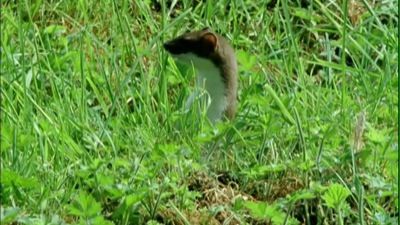
#30 - Meat Eaters
The Life of Mammals - Season 1 - Episode 5
Predators and prey must evolve speed, endurance and manoeuvrability to outwit each other, and the pack hunters must maintain order in the ranks.
Watch Now:Amazon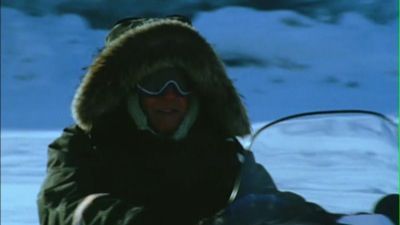
#31 - A Winning Design
The Life of Mammals - Season 1 - Episode 1
From the tiniest bat to the massive blue whale, all mammals share the ability to nurture their young on milk and regulate their own temperatures.
Watch Now:Amazon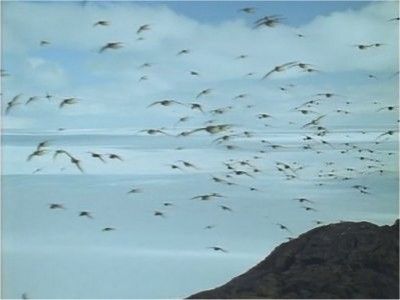
#32 - The Race to Breed
Life in the Freezer - Season 1 - Episode 3
This episode describes the breeding season in Antarctica. It's summer in Antarctica, and with 24-hour daylight the race to breed is on as two million fur seals crowd the beaches of South Georgia. When the pups are born, ferocious bulls attack any intruders who challenge their females. Meanwhile, Chinstrap penguins cross glacial streams and climb near vertical cliffs to feed their chicks as formidable leopard seals lurk.
Watch Now:Amazon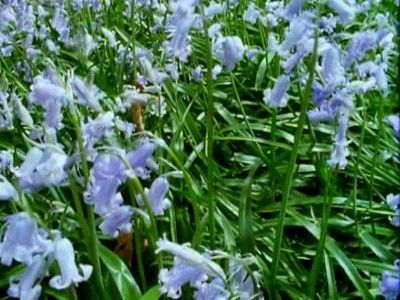
#33 - The Social Struggle
The Private Life of Plants - Season 1 - Episode 4
David Attenborough looks at the extraordinary battles for survival that are fought in the plant world. Cameras reveal how plants use every trick in the book in a bid to come out on top, from growing at different rates to courting and even capitalising on disaster, whether it be hurricanes, fires or being eaten by animals.
Watch Now:Amazon
#34 - Flowering
The Private Life of Plants - Season 1 - Episode 3
Flowers are the most eye-catching feature of plants, but they are there for only one thing - sex. In order to procreate, a male seed from one flower must be carried to the female parts of another. Flashy colours and lurid perfumes entice a host of animal couriers to collect their rewards.
Watch Now:Amazon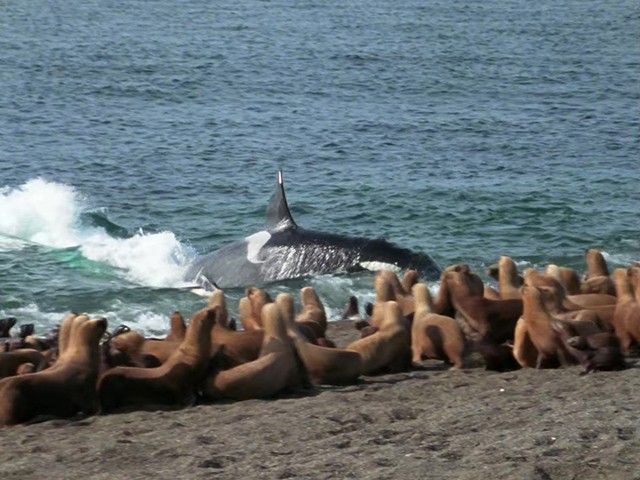
#35 - Hunting and Escaping
Trials of Life - Season 1 - Episode 4
This episode looks at those that hunt other creatures and ways of avoiding capture. Attenborough is attacked by a pair of skuas as he approaches their nest, which demonstrates this particular bird's aggressive behaviour, both when taking food and defending its young. Off the shores of Patagonia, the same group of killer whales returns each year to ambush sea lion pups, which stray out of the safer shallow waters. Having grabbed their prey, they take it back out to sea and 'play' with it for some time before killing it. Poison can be used both as a weapon and a deterrent, such as by the viper and tomato frog respectively. Some animals advertise their defensive measures in advance, in case deployment occurs too late. Among them are the skunk, which discharges an appalling smell, and some salamanders that display their toxicity by remaining stationary, with their warning markings visible. Several species of stick insect and their elaborate camouflage are shown. However, none of these methods of protection pose problems to army ants, which can subdue any of their prey, simply by virtue of their size and vast numbers. The Harris hawk is unusual, since it hunts in teams, and a group of six are shown practising their skill in the desert of New Mexico. The final sequence depicts a troop of chimpanzees displaying strategy and co-ordination as it successfully pursues colobus monkeys through a forest in the Ivory Coast.
Watch Now:Amazon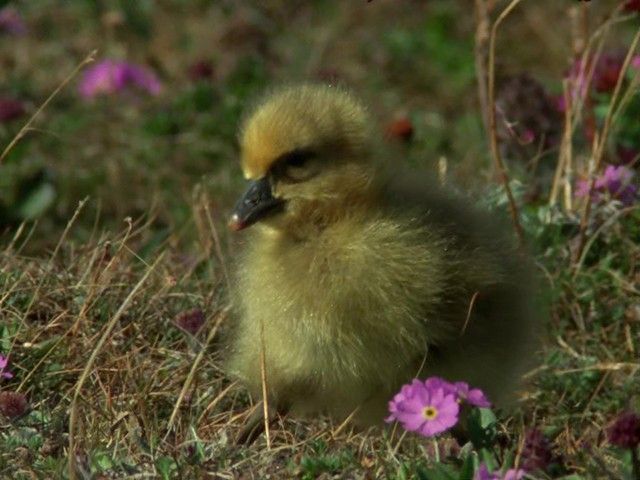
#36 - Growing Up
Trials of Life - Season 1 - Episode 2
This programme describes the ways that various species care for their young. Attenborough defines childhood as achieving two tasks: growing and surviving. He highlights the elephant seal as an animal that experiences a compressed childhood, being abandoned after three weeks and left for up to another eight alone, while it becomes large enough to be able to swim. For terns, there is safety in numbers as the dense population works together to drive out marauding gulls. The snow geese in the Russian arctic show intense devotion as they escort their goslings by foot to the coast some 50 kilometres away. Scorpions carry their young on their backs, while a shrew will leave hers under a stone while she goes to feed. The eider duck is one creature that shares responsibility for its offspring: females regularly supervise the ducklings of others in a group. The mara is another that uses a crèche system, as does the bat, whose nurseries can be up to a million strong. The Florida scrub jay has developed complex parental relationships, using teams rather than pairs. Such behaviour is exhibited on a larger scale by elephants, where all females take an interest in raising a single calf. A chimpanzee’s childhood is socially complicated, as an individual must learn how to behave towards others, as well as master the use of tools. Albatrosses must be accomplished fliers as soon as possible - chicks are shown being hunted by tiger sharks.
Watch Now:Amazon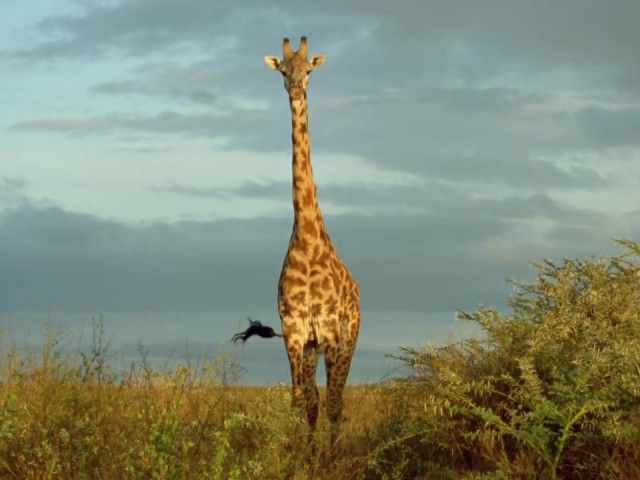
#37 - Living Together
Trials of Life - Season 1 - Episode 7
This episode focuses on those species that co-operate and depend on (or exploit) others. Spotted deer follow langur monkeys as they travel from tree to tree, eating any leaves that get dropped from above. In return, the deer serve as a lookout when the primates are feeding on the ground. Underwater, a hermit crab is shown adding sea anemones to its shell in order to protect itself from attack by an octopus, and a goby assists a virtually blind shrimp. Fleas, lice and mites are parasites: they share no mutual partnership and instead take advantage of creatures for food or shelter. However, parasites have their predators, and an example are the finches of the Galápagos Islands that clear the resident giant tortoises of their ticks, and oxpeckers, which do the same for giraffes in Africa (and even use its fur to line their nests). Some fish regularly clean others, and wrasse and shrimp appear to specialise in this regard, as do remora, which permanently hang on to their hosts. One parasite that grows inside its host is the fluke, and one is shown gestating inside a snail, having previously been unknowingly eaten. Because it needs to transfer to a bird's gut to develop further, it causes the snail to advertise its presence to allow itself to be consumed - thus completing the circle. However, some microscopic creatures inhabit the stomachs of large herbivores in order to break down the cellulose of their diet, thereby aiding their digestion.
Watch Now:Amazon
#38 - Home Making
Trials of Life - Season 1 - Episode 6
This installment deals with how animals construct their shelters from the elements and predators. Burrows and holes can provide considerable refuge, and Attenborough inspects the home of the American prairie dog, an elaborate construction that has its own air conditioning system. Silk is such a valuable commodity that those that can't make it steal it instead. The hermit hummingbird uses it to attach its nest to the underside of a leaf, while the Indian tailorbird stitches two leaves together. However, the expert in complex nest-building is the weaverbird which makes its abode from over 1,000 strips of grass that are perfectly interwoven - and dismantling it if it fails to attract a mate. The beaver is responsible for one of the biggest animal dwellings: its wooden lodge that rises from the river bed stays in place from one generation to the next, and so requires constant maintenance. Some stingless bees use their wax and the resin of tree bark to create labyrinthine structures containing various compartments. Mud is also used by several creatures, such as the potter wasp and the cliff swallow. The termites' intricate creations allow for security, heating, air conditioning, self-contained nurseries and gardens, and sanitation systems. Attenborough hails the species as the consummate home maker, and explores a 15-foot colony in West Africa that contains 1.5 million insects: he crawls right inside to examine its method of ventilation.
Watch Now:Amazon
#39 - Continuing the Line
Trials of Life - Season 1 - Episode 12
The final installment illustrates how species fulfill their ultimate raison d'être and ensure that their genes are passed on to the next generation. It is a universal problem, but one which has given rise to a variety of solutions. Barnacles cannot move, but each has both male and female sex cells, allowing each neighbour to be a potential mate. On the other end of the scale, a female elephant undergoes a long pregnancy - 22 months - and so wishes to ensure that her calf is fathered by a strong and proven male. She is therefore very choosy about her partner. A female chinchilla is even more so, and rejects an unwanted suitor by squirting urine in its face. Mating is a dangerous business when weapons are involved, and a male tarantula approaches his intended with trepidation. Only when he succeeds in holding off her poison fangs is he able to progress any further. For some, the right moments to get together are few and far between: a male crab, for example, must wait until a female moults her shell before he is able to fertilise her. Male sea lions are shown fighting over a harem, and some use the battle to their advantage by making off with reluctant females. Attenborough observes that the monogamous relationships enjoyed by humans are rare within the animal kingdom, but he highlights the Royal albatross as a "beautiful" exception. The pair of birds featured met as five-year-olds, and have been together for twenty years.
Watch Now:Amazon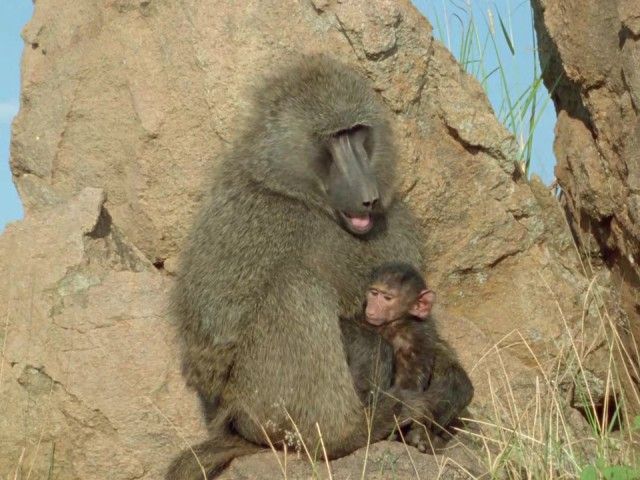
#40 - Friends and Rivals
Trials of Life - Season 1 - Episode 9
This installment investigates the ways in which those animals that live in social groups interact with each other. The solitary eagle is contrasted with whooper swans landing in Scotland after a 1,600-kilometre journey from Iceland. Once arrived, they must battle for territory with those already there, and pairs or families are usually victorious. Attenborough uses a group of farmyard chickens to demonstrate a pecking order. A pride of lions is shown co-operating to subdue a buffalo. Afterwards, each animal peacefully awaits its turn at the carcass. Baboons live in troops of up to 150, and their complex dominance hierarchy is examined in detail. Vampire bats display mutual assistance by regurgitating blood for any neighbour that has missed out on a night's feeding. Dwarf mongooses live in family groups of around a dozen. While some look for food or sleep, others are always posted on the lookout for predators and quickly raise the alarm if necessary. Meanwhile, some of the most extreme co-operation is demonstrated by the underground naked mole rat, whose 80-strong clusters are divided into workers (who tunnel perpetually), soldiers (who only act when danger threatens), and a single queen for breeding. Leafcutter ants are shown transporting their food deep below ground: it has to be planted in a special fungus to remove its indigestible cellulose, and each stage of the operation is carried out by a different caste of individuals.
Watch Now:Amazon
#41 - Fighting
Trials of Life - Season 1 - Episode 8
This programme details how fighting - both physical and psychological - is used for food, land or to gain a mate. Territorial conflict is demonstrated by the hummingbird, and Attenborough illustrates its aggressiveness by placing a stuffed specimen nearby, only to have it speared by its opponent's bill. The midas cichlid on the other hand, has no weapons to speak of, and so uses its mouth to hold on for trials of strength. By contrast, the forelegs of a mantis shrimp are powerful enough to crack the shell of another crustacean: therefore disputes or courtship are fraught with danger. Animals that possess lethal food-gathering weapons usually don't use them against one another, as neither side wishes to risk death. For example, one venomous snake will aim to floor the other, rather than bite. Wolves and big cats largely use snarls and body posture to convey their threat. There are no holds barred between rival zebras: kicking and biting is employed until a victor emerges, whereas giraffes slam their necks against each other. Normally peacable mountain gorillas are shown squabbling when play gets out of hand, and one of them communicates real fright by urinating uncontrollably. Large herbivores that have horns or antlers are naturally inclined to use them to assert their dominance over the females in a herd. Duelling male ibex and Alaskan bull moose undergo some of the most ferocious engagements - sometimes to the death.
Watch Now:Amazon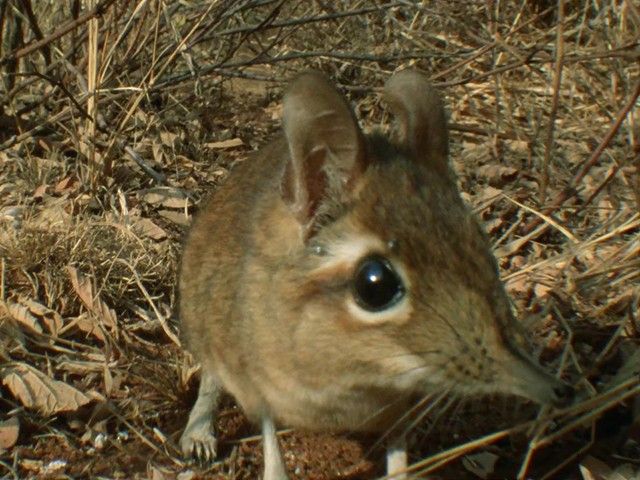
#42 - Finding the Way
Trials of Life - Season 1 - Episode 5
This programme explores forms of navigation. Attenborough starts in Africa at dusk, by describing some of the species that don't rely on sight. The spotted hyena uses its acute sense of smell to guide it while it hunts nocturnally, while galagos urinate on their hands so they can completely mark their movements. Some animals use echolocation and these include swiftlets, bats and river dolphins. By contrast, electric eels use fields of electricity to sense their environment. During the hours of daylight, other methods are employed: the rufous elephant shrew, with its carefully cleared network of pathways, has a sharp mental picture of its habitat - even knowing the various shortcuts with which to evade capture. Attenborough visits the Sahara to illustrate a species that makes the longest overland journey of any insect: cataglyphis, an ant that uses the sun's position to enable it to return to its nest in a straight line. Lobsters in the Bahamas are shown marching in columns to escape stormy waters. In its search for perpetual daylight in which to fish, the Arctic tern makes a 19,000-kilometre journey from one end of the Earth to the other. The albatross is highlighted as one of the most skilled navigators: it can travel up to 1300 kilometres over sea in search of food for its chicks, and still find its way back to the nest. Finally, Attenborough stands on a waterfall in Ireland to tell of the three-year, 10,000-kilometre journey made by elvers.
Watch Now:Amazon
#43 - Courting
Trials of Life - Season 1 - Episode 11
This programme surveys the methods employed in attracting a mate, mainly those of birds. The Indian florican inhabits long grass, and so is difficult to see. In order to gain attention, it 'trampolines' in the same spot for up to 400 times a day. Whales sing to their prospective partners, and the female's calls can be heard by suitors for over eight kilometres. When animals send out signals of attraction, they must also ensure that they don't entice the wrong species, and so have markings that differ prominently. Attenborough highlights the booby as an example: there are around half a dozen species, all of which may occupy the same island. However, the blue-footed booby reassures its chosen mate by continually lifting its feet. Tropicbirds and marsh harriers are shown providing graceful aerobatic displays, while the sac-winged bat uses a strong perfume to lure a companion. Among those birds that produce the most spectacular visual displays are the lyrebird (which also has an elaborate song), the peacock, and the riflebird (and indeed most other birds of paradise). The bowerbird invites potential partners to inspect its bower: a specially prepared area that contains a hut or walkway augmented by strikingly coloured objects. The intricate dances performed by manakins in Trinidad are also examined. Finally, Attenborough observes the topi's display courts, whose sharply defined boundaries are jealously guarded by rival males.
Watch Now:Amazon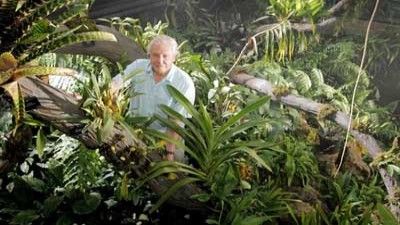
#44 - Life in the Wet Zone
Kingdom of Plants 3D - Season 1 - Episode 1
David begins his journey inside the magnificent Palm House, a unique global rainforest in London. Here, he explores the extraordinary plants that are so well adapted to wet and humid environments and unravels the intimate relationships between wet zone plants and the animals that depend on them. It was in the wet zones of the world that plants first moved on to land and in the Waterlily House David reveals how flowers first evolved some 140 million years ago. Watching a kaleidoscope of breath-taking time-lapses of these most primitive of flowers swelling and blooming in 3D, he is able to piece together the very first evolutionary steps that plants took to employ a wealth of insects to carry their precious pollen for the first time. David discovers clues to answer a question that even had Charles Darwin stumped: how did flowering plants evolve so fast to go on to colonise the entire planet so successfully? He marvels with signature enthusiasm at orchids, the largest family of flowering plants.
Watch Now:Amazon
#45 - Talking to Strangers
Trials of Life - Season 1 - Episode 10
This episode concentrates on communication. In Kenya, Attenborough accompanies a tribesman who calls to a honeyguide, which in turn answers him and leads the pair to a bees' nest. The tribesman extracts the honey, and some is left to reward the bird. African hunting dogs are shown hunting gazelles, of which the target is the individual that leaps lowest. Larks evade merlin by sending a similar message: by continuing to sing while being chased, it tells the pursuer that its prey is fit and therefore will be difficult to catch. (In 80% of cases this turns out to be true.) Vervet monkeys' cries are among the most complex. Their utterances are effectively words: a vocabulary that defines each of their predators, so an alarm call is specific to a particular threat. Some creatures transmit their presence by display, and Attenborough observes thousands of fireflies illuminating the darkness. Sounds travel further underwater, and over 200 species of fish use them to communicate. In turn, sea lions have become adept at sensing their proximity. However, the most visual aquatic animal is the squid, which uses colour change and posture to communicate. Finally, Attenborough swims with dolphins. They converse with a series of ultrasonic clicks, and each has a family call inherited from its mother: effectively a 'surname'. They also use normal sound, body posture and touch - in short, in terms of ability to communicate, they are man's closest rival.
Watch Now:Amazon
#46 - Social Climbers
The Life of Mammals - Season 1 - Episode 9
In the daily hubbub of monkey life, only those with a talent for social wheeler dealing get ahead, driving the shift towards larger brains.
Watch Now:Amazon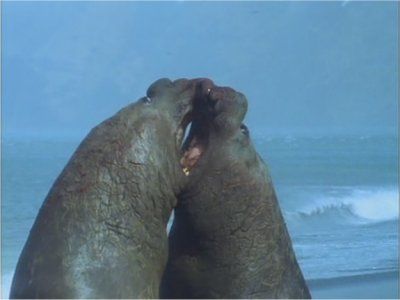
#47 - The Ice Retreats
Life in the Freezer - Season 1 - Episode 2
This episode shows the lives of animals on the Antarctic peninsula. In the spring, the thaw begins and animals like the humpback whale and the crawfish seals follow the ice in retreat.
Watch Now:Amazon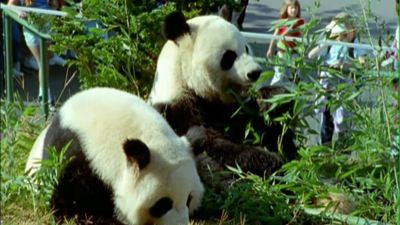
#48 - Opportunists
The Life of Mammals - Season 1 - Episode 6
A mammal capable of having a varied diet can be highly adaptable and exploit new environments including the cities where they thrive.
Watch Now:Amazon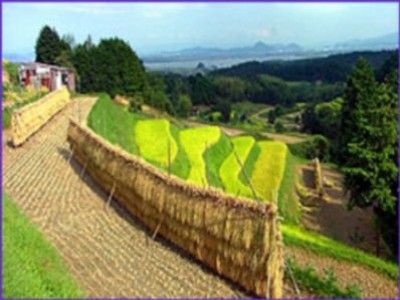
#49 - Japan's Secret Garden
NOVA - Season 27 - Episode 21
The program chronicles a year in the life of wildlife and people around Lake Biwa, Japan, a cycle that has continued unchanged for thousands of years.

#50 - The Bountiful Sea
Life in the Freezer - Season 1 - Episode 1
This episode introduces Antarctica and the surrounding sea and islands. It describes how the continent changes throughout the year. With winter temperatures of minus 70 degrees centigrade and winds of 100mph, only a few hundred people live in this inhospitable continent that is one and a half times the size of Europe. The wildlife, however, is abundant - millions of penguins, thousands of whales and half the world's seals somehow survive hardest conditions on the planet.
Watch Now:Amazon